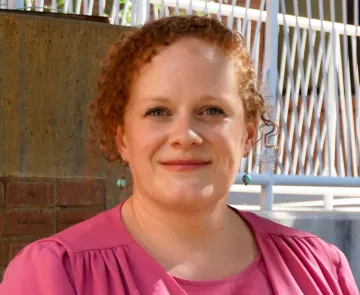CAPLA Urban Planning Professors Awarded $150,000 in NITC Research Grants

In its latest round of research funding, the National Institute for Transportation and Communities (NITC) research consortium awarded more than $485,000 to seven new research projects. Two of those projects, totaling $150,000, feature faculty from the College of Architecture, Planning and Landscape Architecture at the University of Arizona.

Philip Stoker, Assistant Professor of Landscape Architecture and Planning
Rural Gentrification and the Spillover Effect: Integrated Transportation, Housing and Land Use Challenges and Strategies in Gateway Communities, awarded $74,269, is led by Danya Rumore of the University of Utah and CAPLA Assistant Professor of Landscape Architecture and Planning Philip Stoker.
“Small towns and cities near national parks, public lands and other natural amenities throughout the West are experiencing rapid growth and increased visitation,” says Stoker. “These ‘gateway communities’ comprise a significant portion of the rural West, constituting about 31% of all communities in the U.S. Mountain West and more than 60% of those under 25,000 people.”
Research by Rumore and Stoker demonstrates that growth and increased tourism create a range of “big city challenges” for these gateway communities, particularly a significant increase in housing prices, pushing the local workforce to outlying areas and other rural communities. “As a result,” says Stoker, “despite being small towns, many developed gateway communities have large commuter-sheds and more employees who commute into the community than employees who live and work in the community.”
With the NITC funding, Rumore and Stoker will study the extent to which gateway communities throughout the West are experiencing interconnected housing, transportation and land use challenges and how increased visitation and growth affect these issues. Their research will also explore the innovative ways these communities are responding to such challenges.

Ladd Keith, Assistant Professor of Planning and Sustainable Built Environments
Assessing Cool Corridor Heat Resilience Strategies for Human-Scale Transportation, awarded $75,000, is led by three CAPLA faculty members: Ladd Keith, assistant professor of planning and sustainable built environments, Kristina Currans, assistant professor of urban planning, and Nicole Iroz-Elardo, assistant research professor of planning.
“Transportation infrastructure, such as roads and parking lots, are a major contributor to the urban heat island (UHI) effect,” says Keith. “The radiant and waste heat from vehicles also compounds the UHI effect. While heat is detrimental to the pedestrian and cyclist experience and health, there is a lack of research on active travelers’ perception of and personal exposure to heat.”

Kristina Currans, Associate Professor of Urban Planning
Despite this gap in evidence, professional interest is growing in the creation of “cool corridors” to mitigate the UHI effect and support movement of non-vehicular travelers within communities, says Currans.
Keith, Currans and Iroz-Elardo have been working with the City of Tucson and vendors to set up a comprehensive evaluation framework of cool pavements and other cool corridor strategies. The city is part of a Global Cool Cities Alliance Cool Roadways Partnership to pilot cool pavement coatings this fall.

Nicole Iroz-Elardo, Assistant Research Professor of Planning.
“Specifically, we are refining methodologies used in other settings to document how cool corridor strategies influence surface temperatures on the road and pedestrian facilities, ambient air temperatures on and near the road, and personal heat exposure,” says Iroz-Elardo. “While several indices exist, we measure personal heat exposure with wet bulb globe temperature (WBGT), a heat index that incorporates ambient air temperature, humidity, airflow and radiant solar heat and better mirrors the human—and thus pedestrian and cyclist—experience.”
In addition to providing an evaluation of the City of Tucson’s cool pavement coating pilot with their NITC funding, the team will guide Tucson and other municipalities in future cool corridor heat resilience strategies. The results of their research will also provide important foundation work for understanding how the changing climate may impact human-scale transportation, including modal shifts and physical activity based public health outcomes.
View all of the NITC-funded research projects, or learn more about how student-involved faculty research is a fundamental component of the Master of Science in Urban Planning at the University of Arizona.
Header photo by Pexels, courtesy Pixabay.



